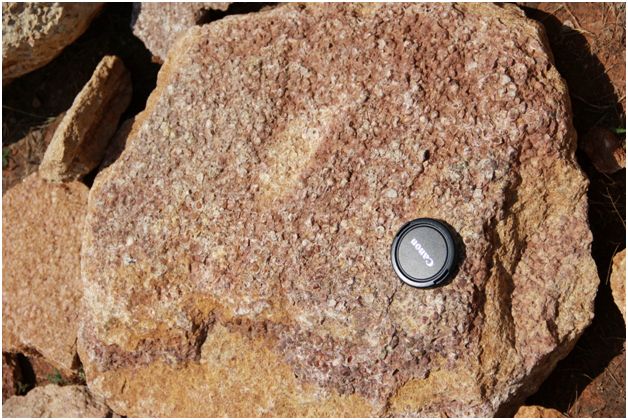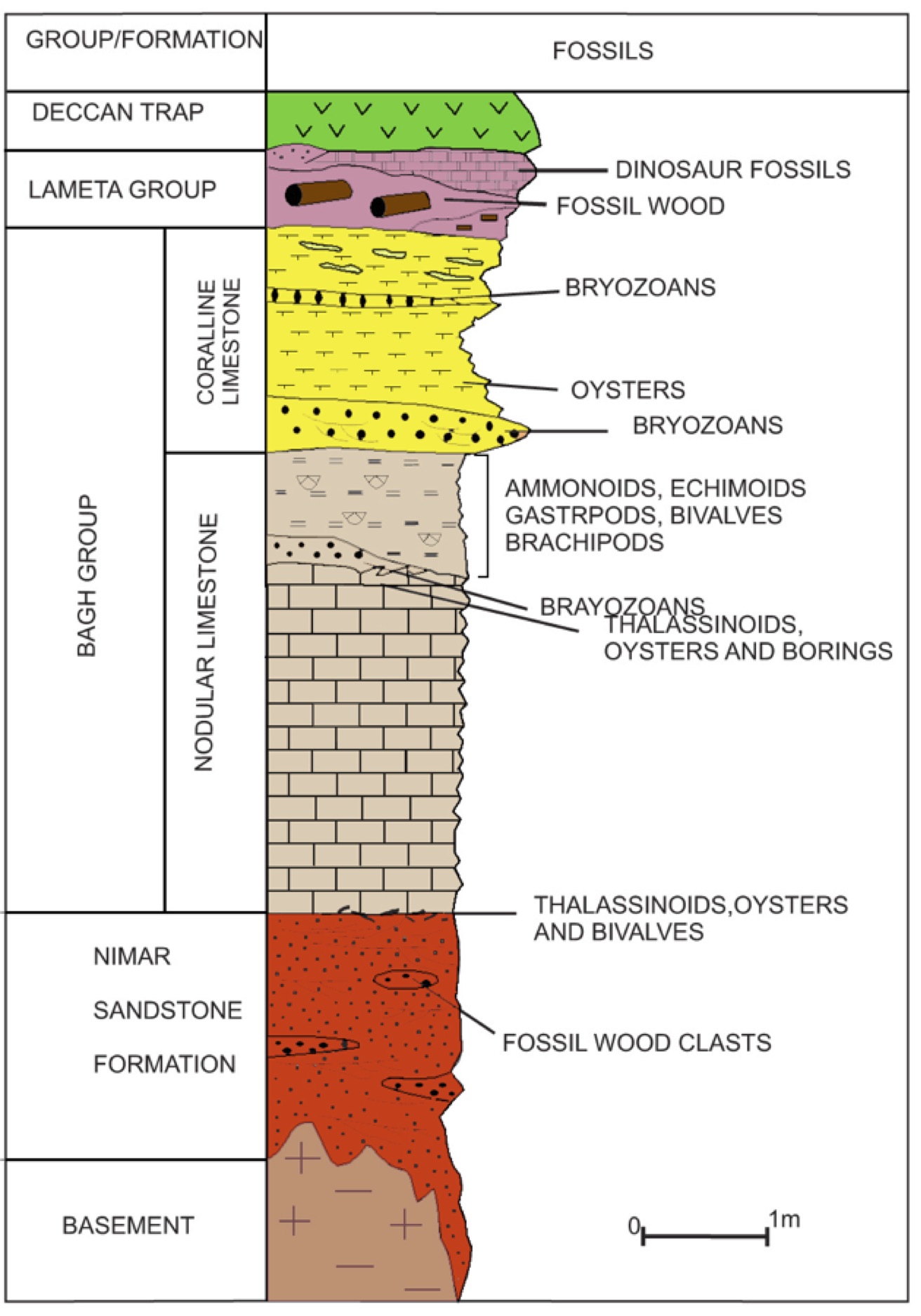Coralline Limestone Fm
Type Locality and Naming
Upper formation of the Bagh Gr. Type section is in Buddhist Caves near Bagh town in Dhar district in Madhya Pradesh. [Original Publication: Blanford, W.T. (1869) Geology of the Taptee and lower Nerbudaa Valleys. Mem. Geol. Surv. India, v.6 (3), pp.163-384; Bose, P.N. (1884) Geology of the Lower Narmada Valley between Nimavar and Kawant. Mem. Geol. Surv. India, v.21, pp.1-72.]. Reference well: Exposures occur at Bariya, Chakrud villages.
Lithology and Thickness
Reef limestone. It is hard, yellow, yellowish-green to reddish-brown, highly fossiliferous limestone or calcareous sandstone.
This formation has been divided into two successive subunits separated by a ferruginous, bioturbated hardground. The upper part of the Coralline Limestone is interrupted at two levels by firmgrounds rich in rhynchonellid brachiopods and oysters. A 2-m-thick oyster rich marl is just below the topmost trough-cross-bedded unit (Ruidas et al., 2018). The top of this formation is capped by a green, glauconitic sandstone. Its thickness is 4-5 m in the type section.
[Figure 0: Composite stratigraphic column of the Bagh Group (after Tripathi, 2006)]
[Figure 1: Coralline Limestone rich in rhynchonellid brachiopods.]
Relationships and Distribution
Lower contact
Conformably underlain by the Nodular Limestone Fm.
Upper contact
Nonconformably overlain by the Deccan Traps Fm basaltic flows (Chirakhan) or at places by the Lameta Fm with a disconformity (Chakrud, Phutibawri).
Regional extent
GeoJSON
Fossils
The Coralline Limestone is predominantly represented by bryozoan skeletal network. But it is also abundant in echinoids, gastropods, oysters, bivalves, brachiopods, foraminifers (Guha, 1976), serpulid worms and sparsely contains shark teeth. The green glauconitic sandstone at its top yielded abundant shark teeth representing Ptychodus sp., Scapanorhynchus sp. aff. S. raphiodon (Agassiz, 1844), Cretodus sp. aff. C. crassidens (Dixon, 1850), Cretalamna sp., Squalicorax sp. aff. S. falcatus Agassiz, 1843, and Elasmobranchii indet.(Prasad et al., 2017). Gangopadhyay and Bardhan (2000) described Barroisiceras onilahyense Basse, 1947 from the Coralline Limestone which is suggestive of Middle Coniacian age. The occurrence of Coniacian large inoceramids Platyceramus mantelli in the lower part and the ammonite Barroisiceras onilahyense in the upper part of Coralline Limestone suggests that the marine sedimentation of the Bagh Group persisted until the Middle Coniacian.
Age
Depositional setting
Deposited in a shallow marine, moderate to high-energy setting above storm wave base.
Additional Information

